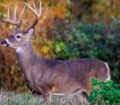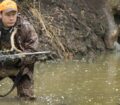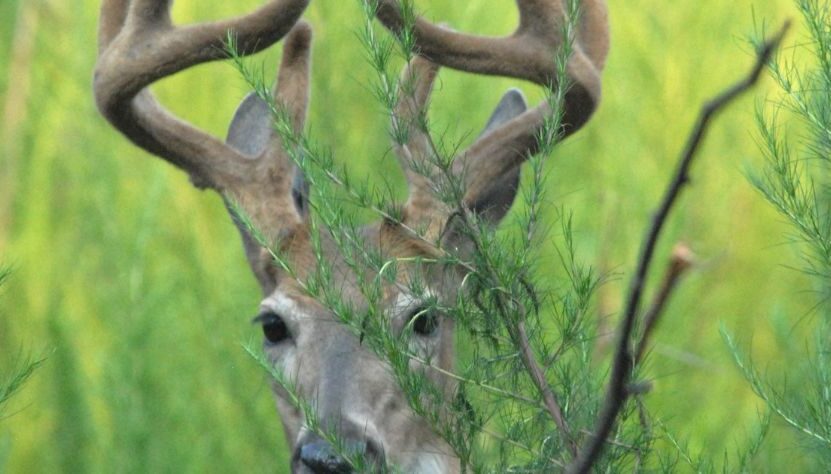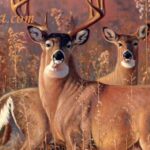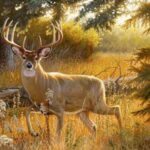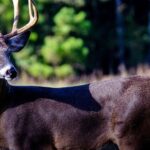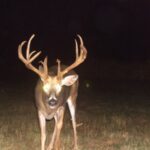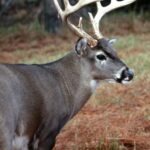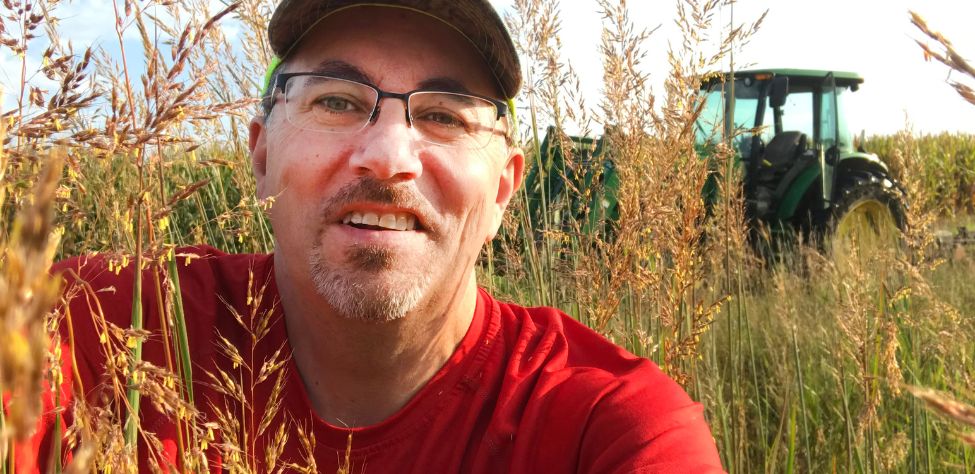
Mark Drury, the founder of MAD Calls and co-owner of Drury Outdoor Productions with his brother Terry and a long-time avid deer hunter, says, “I start hunting a buck in July when the buck’s antlers are just beginning to develop. One of the secrets to consistently taking bucks is knowing which green fields bucks are coming to and which green fields they prefer. I plant in the spring, so I’ll have summer green fields where the deer can feed. I go to these fields in July to identify the trails the deer are using to come into those green fields and put motion-sensor cameras along these trails to get pictures of the bucks coming to the green fields. Then I know which green fields each buck is utilizing. Trail-monitoring cameras enable a hunter to find big bucks and to know where they’re moving quickly and easily and what time of day or night they’re moving, and how big the deer are.
“Even when I’m scouting, I wear camouflage. You must know when to go to the cameras. During the summer months, the deer will move very little. I’ve learned I usually won’t get more than four or five pictures of deer per day on a good trail during July and August. Another big advantage this method of scouting gives me is that I’m scouting every day from 10 or 20 different locations and not leaving any human scent in those regions. I’m not pressuring the deer that I plan to hunt in the fall during the summer months. In addition to wearing camouflage clothing, I usually wear a head net and gloves when visiting my cameras. I want to get to the cameras as quickly and quietly as possible, leave as little human odor as I can, and be invisible to the deer.

“That’s when I begin to pick the bucks I want to hunt from the motion-sensor-camera information and from observing the deer in the field. The bucks I’ll try to hunt aren’t always going to be the biggest bucks I see. The secret is determining from the bucks you have identified which bucks appear on the trails the most often during daylight hours. Some bucks have a tendency not to move until after dark. If you attempt to hunt these bucks, you can hunt several days and not see those bucks during daylight hours. However, if you hunt for the bucks that tend to move down trails and be in the green fields during daylight hours, you drastically increase your odds for taking a buck during the first week of bow season. Once I identify these bucks, I may move some of the cameras and my tree stand to learn all I can about these individual bucks I’ve decided to hunt. Knowing which bucks move during daylight hours gives me a tremendous advantage when hunting season opens. I can learn which bucks move the most during daylight hours by scouting during the summer using binoculars, spotting scopes, and motion-sensor cameras without spending much time in the woods and alerting or spooking the deer.”
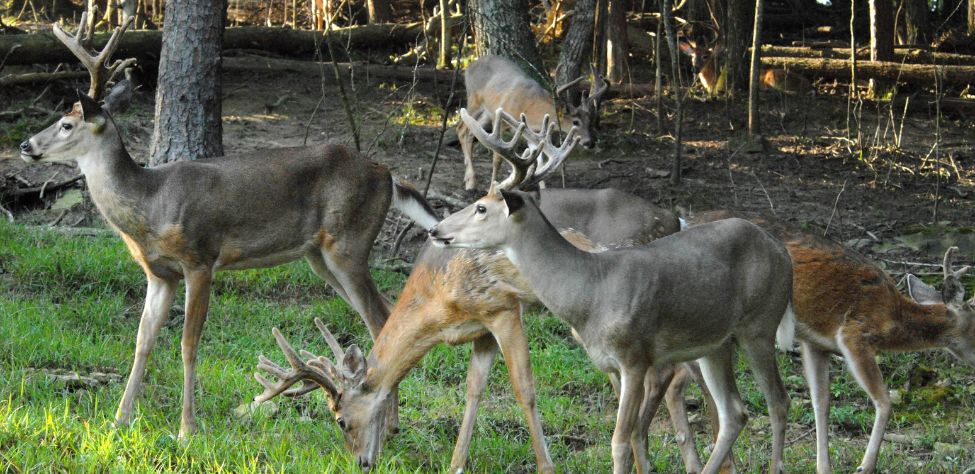
Most often the deer will prefer to enter a field from either corner of the field that back into the woods or from the region that seems to funnel back into the woods. The best way to scout a field is right after rain. Then the tracks will be fresh, and you can pick the places with the most deer movement that reveal tracks going both ways. This tactic will usually work during the first few weeks of bow season usually – depending on hunting pressure – because deer will pattern pretty much the same way day after day if they don’t have many hunter encounters. Besides a cornfield, this tactic works on any type of food source that you identify early in the season. During those first 2 weeks of the season, you can hunt right next to the food source.
Looking for more content? Check out our YouTube channel and watch “Why I Wear a Safety Harness” by John E. Phillips.
Expert Guidebooks on BowHunting Deer: Best Sellers
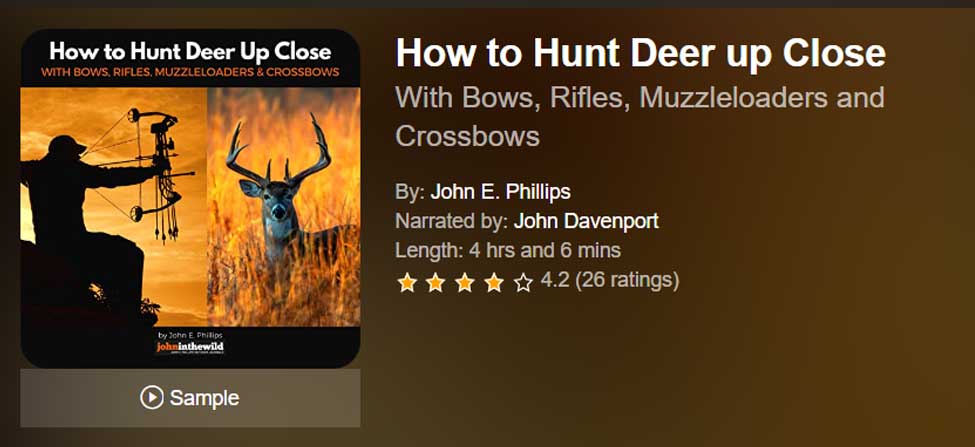
How to Hunt Deer Up Close with Bows, Rifles, Muzzleloaders and Crossbows
To be more successful as a deer hunter, learn all you can about the animal, the wind, the temperature and the techniques required to get in close.
In this book, you’ll hear about some of the best hunters in the nation who know how to hunt deer close, including one of the greatest archers who ever lived, Howard Hill.
John E. Phillips also shares his own deer stories and hunting tips from 50 years of experience.
VERSIONS: AUDIBLE, KINDLE & PRINT
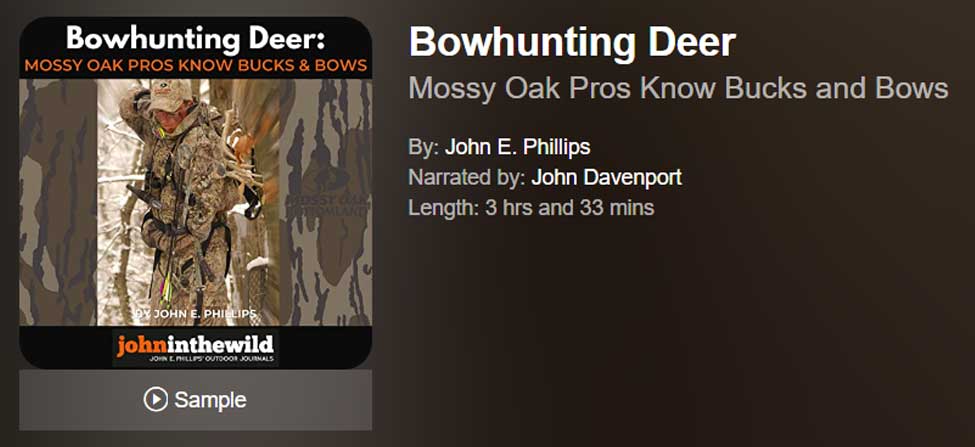
Many deer hunters have told me: “I want a deer-hunting book with regular hunters who are just like me” and “I want a deer-hunting book with the best advice from the best professional deer hunters in the nation”.
Mossy Oak’s Pro Staff is made up of some of the nation’s best deer hunters, professional deer hunters, and TV hosts whose names and advice often are heard in deer camps all over the nation. But many of the more than 1,000 Mossy Oak Pro Staff hunters are everyday, weekend, and vacation deer hunters just like you.
Whether you hunt private or public lands, you’ll find tips and tactics in this book from the Mossy Oak Pro Staff that will increase your odds for locating and taking the bucks of your dreams.
If you’re serious about learning to hunt and take deer with a bow, if you’re looking for a different strategy that will help you identify and harvest big bucks, if you want to learn from your misses as well as from the shots that connect, and if you enjoy being in the great outdoors that the Good Lord has blessed us with, then this book is for you.
VERSIONS: AUDIBLE, KINDLE & PRINT

How to Hunt and Take Big Buck Deer on Small Properties
In this book, you’ll hear from 14 hunters who either have gained permission or leased properties as small as six acres to as much as 250 acres, and how they consistently take older-age-class bucks off these little lands.
VERSIONS: AUDIBLE, KINDLE & PRINT

Jim Crumley’s Secrets of Bowhunting Deer
Using a black magic marker and a gray work jumpsuit, Jim Crumley of Buchanan, Virginia, drastically changed the nature and purpose of hunting camouflage when he created the first sportsman’s camouflage – Trebark. Crumley’s love of bowhunting and his desire to be more invisible changed hunting clothing forever.
In this hunting guide, he shares the wisdom that he’s learned throughout his lifetime about how to be a hunter, how to find a deer lease, how to scout for deer, and more.
Special features include how to:
- Have a magic 60 acres to hunt
- Decide the best equipment to use
- Find deer year-round
- Locate land to hunt
- Know the best place to put your tree stand
- Get bucks within bow range
VERSIONS: AUDIBLE, KINDLE & PRINT

How to Hunt Deer Like a Pro
How do you know if the land you hunt has a trophy deer on it? Wildlife manager Bob Zaiglin, of Uvalde, Texas and Jim Crumley, the father of modern-day hunting camouflage, tells you how to find out. GPS can make finding and taking that trophy buck easier. This hunting guide will teach you how to hunt big bucks where no one else can find them, how to call deer, and how to become versatile as a deer hunter, so that if one deer tactic doesn’t work, another one will.
In the chapter, “How to find Bucks at Scrape,” Dr. Keith Causey, retired professor of Wildlife Science at Auburn University, describes the best way to hunt a scrape.
Brad Harrison of Neosho, Missouri, is a nationally-known videographer, professional deer hunter and master at calling deer. Another master is Will Primos of Primos Game Calls. These two experts will tell the best deer calls and when to use them in this book.
And for over 20 years, Bo Pitman, lodge manager of White Oak Plantation, has been studying deer movement patterns. He explains what types of conditions are best for predicting deer movement.
VERSIONS: AUDIBLE, KINDLE & PRINT

Deer hunting and deer hunters are drastically changing each year. To learn new techniques for hunting deer and have more places to hunt, I’ve interviewed some of the best deer hunters in the nation and share their tactics in How to Hunt Deer Like a Pro: Volume II.
In Chapter 10, Jacob Lamar tells you his tactics for consistently taking older-age-class bucks on public lands in several states. Chapter 11, Bob Walker explains how to find places on public lands where you can hunt that 99 percent of the other hunters never have considered hunting. The Bonus Chapter with David Ramey tells you how, where, when and with what equipment to take big Kansas bucks on public lands by hunting in 100-degree weather when others won’t hunt.
Chapter 13, Mark Drury, his family and his guests take mature bucks every season by having more small places to hunt rather than one large property. Drury explains the strategy of having satellite farms to hunt that only may be 50-150 acres each or less. Chapter 15, Pat Reeve, who hunts far-northern states and Canada, says, “I don’t like hunting for mature bucks until the weather is 20 degrees or less.” Chapter 4, Dr. Larry Marchinton says that funnels are the most-reliable stand sites to hunt for big bucks and tells why.
VERSIONS: AUDIBLE & PRINT

